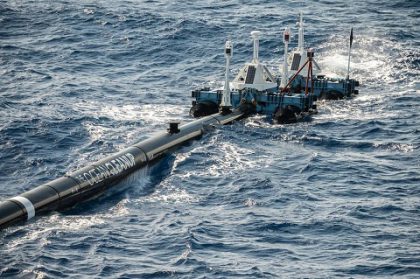 Latest news from the SYSTEM 001 Project:
Latest news from the SYSTEM 001 Project:
In September, we launched our first system, with the aim of achieving proof of technology and commencing cleanup. Twenty years after the discovery of the Great Pacific Garbage Patch, this was the first time a system was deployed to start to clean it up. We did this after completing hundreds of scale model tests and a series of nearshore prototypes.
Yet, when launching the system, we knew, and had to accept, that uncertainty remained. This makes sense, as something like this has never been done before. Especially when considering the interaction between the system and the plastic, there was no way to test it before deploying a cleanup system in the Great Pacific Garbage Patch. Hence, we must learn by doing, developing the technology in an iterative fashion.
During the first four months that the system was offshore, we were able to confirm many of the key features of the cleanup system. We also encountered some unscheduled learning opportunities; notably 1) the system hasn’t been able to retain the plastic it caught, and 2) the floater suffered from a structural failure, causing an 18-meter end section to disconnect from the rest of the system, just before the end of 2018.
Following the structural failure, we decided to bring the system back to land as quickly as possible, where we began an intensive root cause analysis process. Over the past two months, we collected as much data as possible and analyzed it with the purpose of understanding what caused the two known problems. Since understanding a problem is half the solution, this root cause analysis forms the crucial basis for upgrading the design before relaunch in coming months. In our latest update, we explain the results of this analysis.
But first the successes
Once System 001 was launched into the Pacific, we first deployed it 300 nautical miles offshore as a dress rehearsal, before going all the way to the center of the Great Pacific Garbage Patch. When system passed the checklist, we decided to tow it the remaining distance.
In the four months that System 001 was in the Pacific, many aspects of the technology were validated; namely:
– The U-shape configuration (and the system’s ability to retain the U-shape). Once the system was arranged in its operational shape, it maintained this configuration without any challenges.
– System 001’s ability to orient with the wind. To be able to effectively catch plastic, the concave side of the system must always point in the direction the system travels (relative to the plastic). Hence, we designed the system to be able to passively orient itself away from the wind[1]. We have been able to confirm that the system indeed expresses this self-orienting behavior.
– Plastic concentrations in and around the system were much higher than in any other location in the Great Pacific Garbage Patch; and, although the periods the plastic was retained in the system were not yet of sufficient length, the system did capture and concentrate plastic.
– Due to the heterogeneity of ocean conditions, System 001 was built to follow the varying movements of the water, rather than respond against the forces. The system’s stability in operational configuration and response to following the waves were in line with our design expectations.
– Plastic was not witnessed to have been lost due to over topping.
– During its time offshore, the electronics and the satellite connection were strong, allowing us to compile data on its movements, to measure the strains on the floater and to acquire imagery taken from the system. As the cleanup fleet will one day be fully autonomous, being able to establish a reliable communications link with the systems is crucial.
– Protecting the natural environment is at the core of our work. On board the three crew shifts were marine biologists and third-party observers to understand if and how System 001 interacted with the environment surrounding it. During its deployment, no environmental impact issues were observed.
Retaining the plastic
Once the system was deployed and configured in the Great Pacific Garbage Patch, it was soon observed that the plastic that had accumulated within the system was not remaining inside of it. At times, large amounts of plastic would gather, only for some -or all- of it to float out again. Plastic was also occasionally observed to accumulate on the convex side of the cleanup system. The plastic count within the system did not remain high enough for an efficient extraction process. It is important to mention that, when we have a fleet of systems deployed, the ability of the systems to retain debris for several weeks or even months is crucial, since that will be the expected time frame between collection trips. To effectively remove vast amounts of plastic, we therefore needed to understand why the plastic wasn’t being retained.
Read the rest of this interesting article from the “Source”













